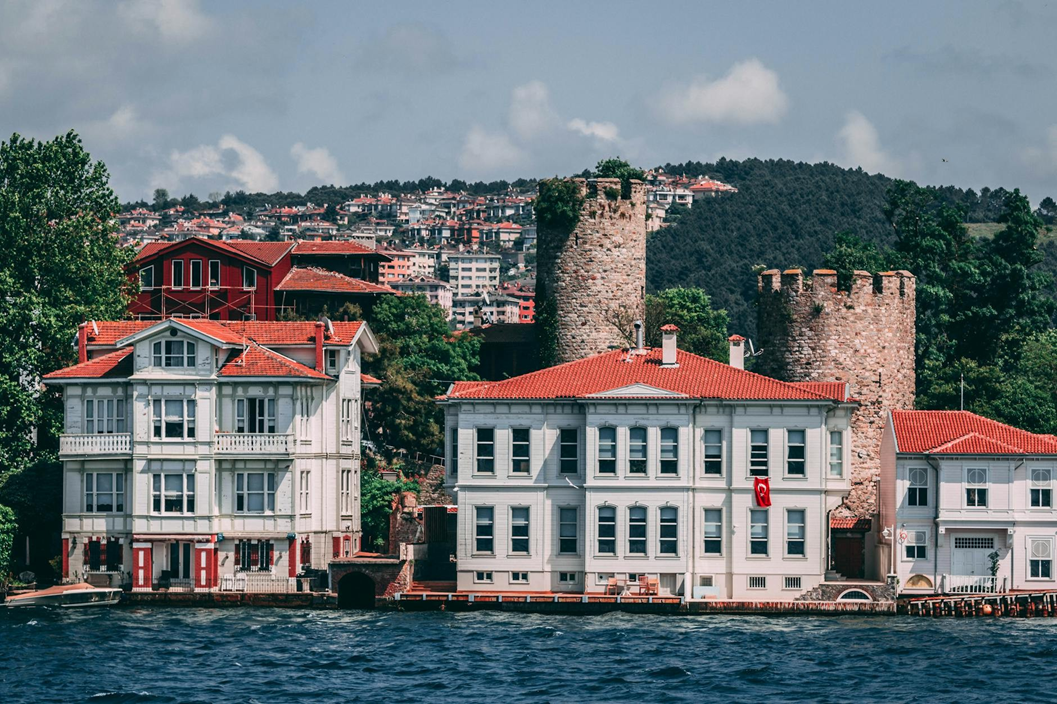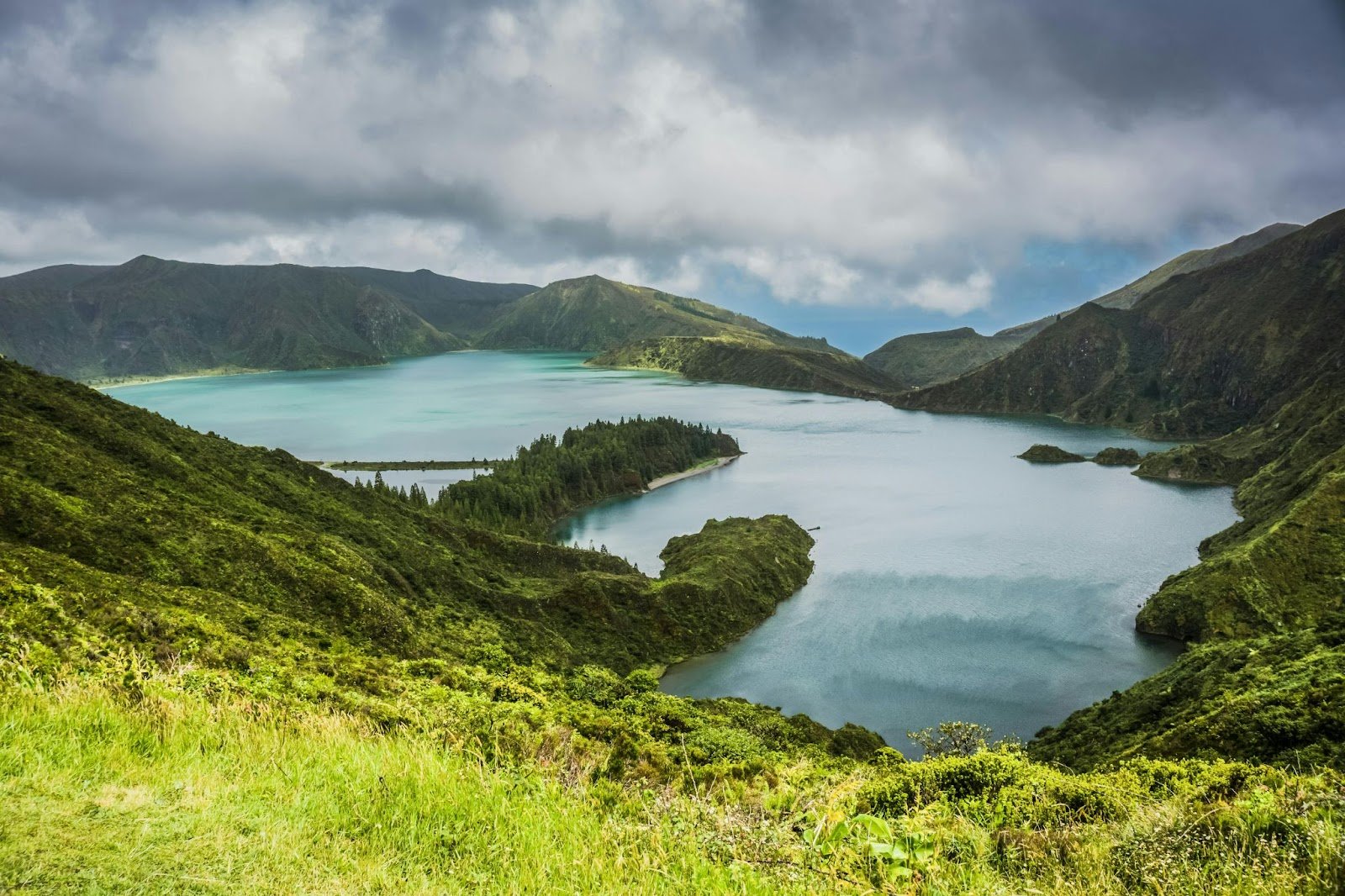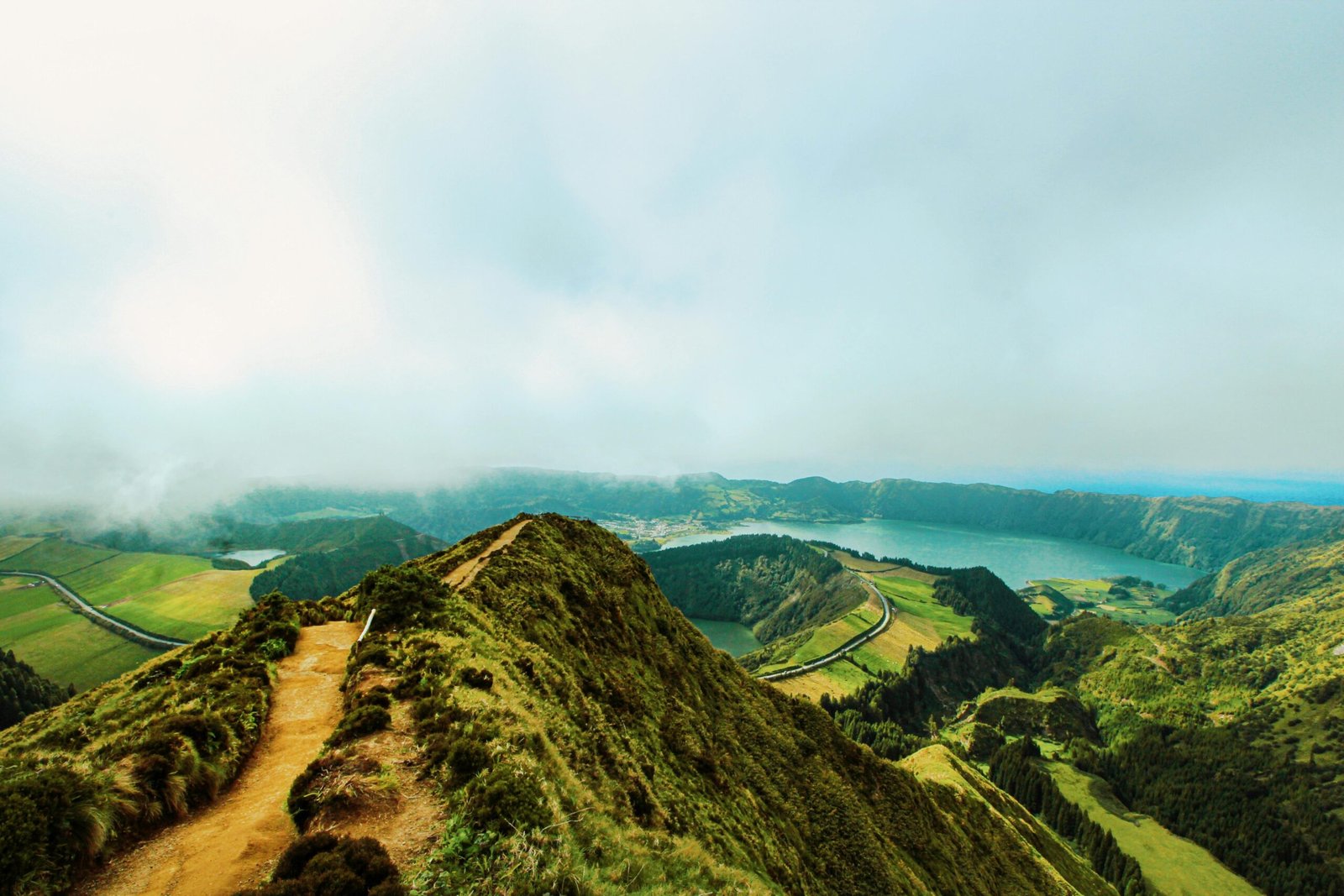Have you ever dreamed of escaping the tourist crowds and discovering a hidden paradise? 🏖️ Portugal, with its sun-soaked beaches and charming cities, might seem like a well-trodden destination. But beneath its popular facade lies a treasure trove of secret spots and undiscovered wonders waiting to be explored.
Imagine strolling through cobblestone streets in a medieval town where time seems to stand still, or savoring a mouthwatering local delicacy that hasn’t made it to the international foodie scene yet. Picture yourself standing in awe before a breathtaking natural wonder that most visitors never get to see. These are the experiences that transform a good vacation into an unforgettable journey.
In this blog post, I’ll take you on a virtual tour of Portugal’s hidden gems. From secluded beaches and off-the-beaten-path historical towns to enchanting natural wonders and authentic cultural experiences, get ready to uncover the Portugal that lies beyond the guidebooks.
Undiscovered coastal paradises
Secluded beaches of the Algarve
While the Algarve is known for its popular tourist spots, it also harbors hidden coastal treasures. Praia da Marinha, nestled between limestone cliffs, offers crystal-clear waters and stunning rock formations. For a more secluded experience, venture to Praia do Carvalho, accessible only through a tunnel carved into the rock face.
Pristine shores of the Azores
The Azores archipelago boasts some of Portugal’s most untouched beaches. Santa Maria Island’s Praia Formosa stands out with its white sand and turquoise waters, a rarity in the volcanic Azores. On São Miguel Island, Praia dos Moinhos offers a tranquil setting with its black sand and traditional windmills.
Hidden coves along the Silver Coast
Portugal’s Silver Coast hides numerous secluded coves waiting to be discovered. Praia da Ursa, near Sintra, rewards adventurous travelers with its dramatic scenery and isolation. Further north, the small fishing village of São Martinho do Porto offers a sheltered bay perfect for calm waters and breathtaking sunsets.
| Region | Beach | Unique Feature |
| Algarve | Praia da Marinha | Limestone cliffs and rock formations |
| Azores | Praia Formosa | White sand (rare in the Azores) |
| Silver Coast | Praia da Ursa | Dramatic, isolated scenery |
These hidden coastal paradises offer:
- Natural beauty untouched by mass tourism
- Opportunities for quiet relaxation and reflection
- Unique geological features and landscapes
- Authentic local experiences away from crowds
Now that we’ve explored these secluded coastal gems, let’s venture inland to discover Portugal’s off-the- beaten-path historical towns.
Off-the-beaten-path historical towns

Monsanto: The village of boulders
Nestled in central Portugal, Monsanto is a truly unique historical town that seems frozen in time. This village is famous for its peculiar architecture, where massive granite boulders serve as walls, foundations, and even roofs of houses. As you wander through its narrow, winding streets, you’ll feel transported to a medieval fairy tale.
Key features of Monsanto:
- Boulder-integrated architecture
- Panoramic views of the surrounding countryside
- Traditional Portuguese customs and festivals
- Designation as “the most Portuguese village in Portugal”
Óbidos: A medieval walled city
Just north of Lisbon lies the charming town of Óbidos, encircled by well-preserved medieval walls. This picturesque town is a maze of whitewashed houses adorned with colorful flowers and intricate tilework. Óbidos is also known for its literary heritage and the famous cherry liqueur, Ginjinha.
| Attraction | Description |
| Castle walls | Walk the entire perimeter for stunning views |
| Rua Direita | Main street lined with shops and cafes |
| Igreja de Santa Maria | 12th-century church with beautiful azulejos |
| Literary Village | Bookshops in unlikely places, including an old church |
Marvão: Hilltop fortress with panoramic views
Perched atop a rocky crag in the Alentejo region, Marvão offers breathtaking views of the Portuguese and Spanish landscapes. This small fortified town boasts narrow streets, well-preserved city walls, and a 13th-century castle. The town’s isolated location has helped preserve its medieval charm and tranquil atmosphere.
Tomar: Home to the mysterious Knights Templar
Tomar, located in central Portugal, is a town steeped in history and mystery. Its crown jewel is the Convent of Christ, a UNESCO World Heritage site and former headquarters of the Knights Templar. The town’s architecture reflects various historical periods, from Romanesque to Renaissance.
Must-visit sites in Tomar:
1. Convent of Christ
2. Praça da República (main square)
3. Synagogue of Tomar
4. Mata Nacional dos Sete Montes (Seven Hills National Forest)
These off-the-beaten-path historical towns offer a glimpse into Portugal’s rich past, away from the bustling tourist centers. Next, we’ll explore some of Portugal’s enchanting natural wonders that often go unnoticed by visitors.
Enchanting natural wonders

A. Benagil Cave: Nature’s cathedral
Nestled along the Algarve coast, Benagil Cave stands as a testament to nature’s artistry. This awe- inspiring sea cave, accessible only by boat or kayak, features a unique dome-like structure with a natural oculus that allows sunlight to pour in, creating a breathtaking play of light and shadow.
Key features of Benagil Cave:
- Golden sand beach inside the cave
- Natural skylight formed by erosion
- Crystal-clear turquoise waters
- Intricate rock formations and textures
B. Peneda-Gerês National Park: Wilderness and waterfalls
Portugal’s only national park, Peneda-Gerês, offers a stunning landscape of rugged mountains, lush forests, and cascading waterfalls. This biodiverse haven is a paradise for nature lovers and adventure seekers alike.
| Activity | Description |
| Hiking | Miles of scenic trails |
| Wildlife watching | Home to wolves, deer, and eagles |
| Swimming | Crystal-clear lagoons and waterfalls |
| Cultural exploration | Ancient villages and Roman ruins |
C. Berlengas Islands: A marine reserve sanctuary
Off the coast of Peniche lies the Berlengas archipelago, a UNESCO Biosphere Reserve. This cluster of islands offers a unique blend of natural beauty and rich marine life, making it a hidden gem for eco- tourists and nature enthusiasts.
Highlights of Berlengas:
1. Berlengas lighthouse – A iconic 19th-century structure
2. Pristine beaches with crystal-clear waters
3. Diverse bird species, including puffins
4. Excellent snorkeling and diving opportunities
With these enchanting natural wonders, Portugal proves that its beauty extends far beyond its famous cities and beaches. Next, we’ll explore the culinary delights that await visitors in lesser-known regions of the country.
Culinary Delights Beyond Lisbon and Porto

Portugal’s food scene goes far beyond pastéis de nata and port wine. Venture off the tourist trail, and you’ll find flavors that tell the story of the land.
A. Alentejo’s Farm-to-Table Experiences
This rural heartland serves dishes as wide-open as its plains. Try migas (bread-based comfort food) with black pork at a family-run tasca. Many restaurants grow their own veggies—I’ve picked tomatoes straight from the garden at Herdade do Esporão.
Must-try:
- Açorda à Alentejana (garlic bread stew)
- Ensopado de Borrego (herb-rich lamb stew)
B. Serra da Estrela’s Artisanal Cheeses
Portugal’s highest mountains produce its creamiest cheese. Queijo Serra da Estrela DOP is made by hand using ancient methods. Visit a queijaria (cheese dairy) in winter to see shepherds milk sheep—the best time for fresh batches.
Pair it with:
- Local honey
- Rustic rye bread
C. Douro Valley’s Lesser-Known Wineries
Skip the crowded port lodges. Small producers like Quinta do Crasto make stunning reds from century-old vines. I once joined a harvest—grape-stomping is harder than it looks!
Hidden gems:
- Tinta Roriz (Portuguese Tempranillo)
- Rabigato (crisp white grape)
D. Seafood Treasures of the Ria Formosa
This lagoon system near Faro is a shellfish paradise. Clams (amêijoas) are harvested daily. At Restaurante Cais 2, I ate razor clams so fresh they tasted of the ocean.
Don’t miss:
- Arroz de Lingueirão (razor clam rice)
- Oysters from Tavira (best with lemon and cold beer)
Pro Tip: In Alentejo, lunch is sacred. Arrive before 2 PM or risk missing out!
Cultural Experiences Away from Tourist Hotspots

Portugal’s soul isn’t found in crowded plazas—it’s in quiet workshops, ancient ruins, and moonlit fado halls. Here’s where to dive deep.
A. Fado Houses in Coimbra
Forget Lisbon’s commercial shows. Coimbra’s fado is raw, academic, and sung by men in black capes. At Fado ao Centro, students perform haunting melodies under medieval arches. I once sat next to a 90-year-old local who whispered the lyrics like prayers.
Key difference:
- Coimbra fado: Male voices, guitarra (12-string guitar), themes of longing
- Lisbon fado: Female voices, more theatrical
B. Traditional Crafts in Arraiolos
This Alentejo village has woven wool rugs since the 15th century. At Casa dos Tapetes, women stitch floral patterns for months—each rug a family heirloom. You can watch them work (and resist buying one—I failed).
Fun fact:
The dyes come from local plants: pomegranate skins for red, olive leaves for green.
C. Roman Ruins in Conímbriga
Pompeii gets crowds; Conímbriga gets whispers. Walk mosaic floors with 2,000-year-old dog paw prints. The “House of Fountains” has a garden that still channels ancient water. I once had the whole site to myself at sunset.
Don’t miss:
- Intact heating systems under the baths
- The museum’s glass perfume bottles
D. Cork Harvesting in Alentejo
Portugal produces 50% of the world’s cork. In summer, watch tiradores peel bark from trees like banana skins—it’s silent work that respects the tree’s 9-year regrowth cycle. Herdade do Rio Frio offers tours ending with wine stopper workshops.
Why cork?
- Sustainable: Trees live 200+ years
- Every piece is used (even scraps become handbags)
E. Ceramic Art in Caldas da Rainha
This town invented Portugal’s quirky “saucy cabbage” pottery. At Museu da Cerâmica, you’ll see phallic veggies and grumpy frogs. I bought a pitcher shaped like a drunken monk—best €20 ever spent.
Local legend:
Queen Leonor founded the first pottery hospital here to “heal” broken ceramics.
Bonus: In Coimbra, fado starts late (10 PM). Grab a ginjinha at Bar Quebra Costas first—it’s where students go.
Bonus Tip: The “Two-Street Rule” for Authentic Dining

Here’s a trick I’ve used for years: Never eat on the street where you see tour buses. Walk just two streets over, and you’ll find better food at half the price.
In Porto, skip Ribeira’s riverside restaurants—climb up to Rua das Flores for family-run tascas serving killer francesinhas. In Lisbon, avoid Rua Augusta; head to Rua das Gáveas where chefs eat after work.
Why it works:
- Rent is cheaper off main streets = more budget goes to ingredients
- Menus are in Portuguese only = good sign
- You’ll often be the only foreigner (compliment the cook with “Está divinal!” – “It’s heavenly!”)
Last time, this rule led me to a tiny Algarve spot where the owner grilled sardines on a literal door turned into a BBQ. Best €8 meal ever.
FAQs: Hidden Gems in Portugal
1. Are these hidden gems hard to reach without a car?
Not at all! Trains/buses serve towns like Óbidos and Tomar. For coastal spots (like Benagil Cave), join boat tours from Lagos or Portimão.
2. What’s the best season to avoid crowds?
March-May and September-October—mild weather, fewer tourists. Summer gets busy, but dawn visits to popular spots (like Peneda-Gerês waterfalls) beat the rush.
3. Is English widely spoken in these areas?
Yes, but locals appreciate basic Portuguese. Master these:
- “Bom dia” (Good morning)
- “Obrigado/a” (Thank you—”a” if you’re female)
4. Are these spots safe for solo travelers?
Very! Portugal ranks among the world’s safest countries. As a solo explorer myself, I’ve found locals often go out of their way to help.
5. What’s one hidden gem you’d prioritize with limited time?
Monsanto. Nowhere else on earth blends medieval life with giant boulders so seamlessly. Plus, it’s just 2.5 hours from Lisbon by car.
Got more questions? Drop them below—I’ve road-tested every tip here!
Portugal isn’t just about Lisbon’s trams or Porto’s port cellars. The real magic happens in cliffside fishing villages where laundry flaps between medieval houses, in cheese cellars where time moves at the pace of sheep’s milk, and on beaches where the only footprints might be your own.
We’ve walked through hidden coastal coves, towns built into boulders, and kitchens where recipes haven’t changed in 300 years. These places matter because they keep Portugal’s soul alive—untouched by mass tourism, waiting for those willing to look beyond the postcards.
Now it’s your turn. Book that rental car, talk to the old man at the café counter, turn down the unmarked dirt road. The Portugal of your dreams exists—you just have to know where to step off the map.
When you’re sipping homemade ginja in a village square at sunset, with no one but locals for company… isn’t that the travel moment we’re all actually chasing?








